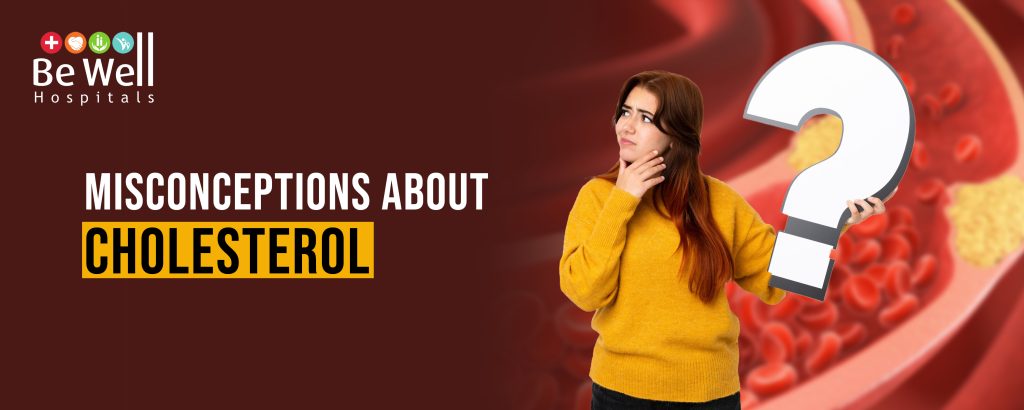
Introduction
High cholesterol is often called a “silent killer” because it shows no symptoms until serious damage is done—like a heart attack or stroke. Many people don’t even know they have it until it’s too late. Cholesterol is essential for the body, but when levels—especially LDL (bad) cholesterol—become too high, it can quietly clog arteries and harm your heart and brain. The good news? High cholesterol is both preventable and manageable. This blog explores how cholesterol affects your body, its hidden risks, and how your everyday habits can either contribute to or prevent long-term health complications.
Understanding Cholesterol in a Modern Lifestyle
Cholesterol is a waxy, fat-like substance found in every cell of the body. It’s crucial for building cell membranes, producing hormones, and aiding digestion. However, when LDL (bad) cholesterol levels rise too high, it can accumulate in arteries, forming plaques that narrow vessels and increase the risk of heart disease and stroke. HDL (good) cholesterol helps remove this excess, while triglycerides add to cardiovascular risk if elevated. Sedentary routines, processed diets, smoking, and alcohol overuse disrupt this balance, making cholesterol a major modern health concern.
Why High Cholesterol is a Silent Killer
What makes high cholesterol particularly dangerous is its silent nature. There are usually no early symptoms, and damage builds up over time. Excess LDL cholesterol silently forms plaques inside arteries, leading to atherosclerosis—a narrowing that reduces blood flow to vital organs. Many discover they have high cholesterol only after a heart attack or stroke. Without regular screening, it’s nearly impossible to detect. This delayed discovery means complications like heart failure, stroke, or kidney damage may already be progressing before treatment begins.
Common Cholesterol-Related Health Risks
- Atherosclerosis (narrowing of arteries)
- Heart attack from plaque-induced clot formation
- Stroke due to blocked blood flow to the brain
- Peripheral Artery Disease (reduced blood flow to limbs)
- High blood pressure from hardened arteries
- Kidney damage due to impaired circulation
Everyday Lifestyle and Diet Triggers
A sedentary lifestyle combined with an unhealthy diet is a key contributor to high cholesterol. Processed foods, high in trans and saturated fats, elevate LDL levels. Sugar, excessive alcohol, and smoking further compound the problem. Additionally, modern work-from-home habits often limit physical activity, causing weight gain and hormonal imbalances that further raise cholesterol. These everyday choices significantly impact your heart health, often without your knowledge.

Genetic and Medical Risk Factors
Some individuals are genetically predisposed to high cholesterol, a condition called familial hypercholesterolemia. Other risk-enhancing medical issues include diabetes, hypothyroidism, chronic kidney disease, and liver disorders. Women may see increased cholesterol levels after menopause. People of all sizes—thin or overweight—are at risk, and age only increases vulnerability. Knowing your family history and managing chronic conditions is vital for early prevention.
Detecting High Cholesterol Early
Since there are no visible symptoms, the only way to know your cholesterol levels is through a blood test known as a lipid profile. This measures total cholesterol, LDL, HDL, and triglycerides. Adults aged 20 and above should get screened every 4–6 years, and more frequently if they have risk factors. Understanding these numbers allows you to make informed decisions and begin interventions before complications arise.
Dietary Changes That Support Cholesterol Health
The food you eat has a direct impact on your cholesterol profile. Saturated fats in red meat, butter, and full-fat dairy raise LDL levels. Conversely, foods rich in soluble fiber—like oats, beans, fruits, and vegetables—help reduce bad cholesterol. Omega-3 fatty acids from fatty fish, flaxseeds, and walnuts lower triglycerides and improve heart health. Replacing animal fats with plant-based oils like olive or avocado oil and reducing processed food consumption is crucial. Trans fats, found in packaged snacks and baked goods, are particularly harmful and should be completely avoided.
Exercise and Weight Management
Physical activity helps increase HDL (good) cholesterol and lower LDL and triglycerides. At least 30 minutes of moderate exercise—such as brisk walking or cycling—most days of the week can have a significant impact. Maintaining a healthy weight reduces the burden on your heart and supports better cholesterol balance. Even modest weight loss (5–10% of body weight) can yield measurable improvements.
Lifestyle Modifications that Make a Difference
- Eat a heart-healthy diet rich in whole grains, fruits, vegetables, and lean proteins
- Limit red meat, full-fat dairy, fried food, and processed snacks
- Exercise regularly—at least 150 minutes of moderate activity per week
- Quit smoking to boost HDL levels and reduce cardiovascular risk
- Manage stress with relaxation techniques, yoga, or meditation
- Limit alcohol to moderate levels or avoid it altogether
- Prioritize sleep to allow the body time to repair and regulate metabolism
- Get regular health checkups to monitor cholesterol and overall health
Work-from-Home and Cholesterol Management
Remote work has led to increased sedentary behavior and unhealthy snacking. Poor home workstation setups also contribute to physical inactivity. Simple changes like standing desks, scheduled breaks, hydration reminders, and maintaining a consistent meal plan can counteract these effects. Ergonomic furniture and structured routines support both posture and metabolic health.
Misconceptions About Cholesterol

- “Only overweight people get high cholesterol”: False. Slim people with poor diets or genetic risks are also vulnerable.
- “Cholesterol from eggs and shellfish is harmful”: In moderation, these do not significantly impact blood cholesterol in most people.
- “Medication alone is enough”: Lifestyle changes are essential even when on cholesterol-lowering medications.
- “I feel fine, so my cholesterol must be okay”: High cholesterol has no symptoms—regular testing is the only way to know.
- “Only older adults need to worry”: Cholesterol problems can begin in youth. Early screening is key.
Educating the Next Generation on Heart Health
Preventing high cholesterol starts early. Children and young adults should be taught the importance of balanced nutrition and regular exercise. Families play a crucial role in modeling healthy behaviors. Schools and pediatricians can incorporate early screenings and health education to build awareness. Early intervention reduces risk of future heart disease and empowers a healthier generation.
Conclusion
High cholesterol is silent—but not invisible if you know where to look. With regular screenings, mindful eating, consistent physical activity, and stress management, you can stay ahead of this invisible threat. Don’t wait for symptoms to take control of your heart health. Whether you’re a student, a professional, or managing a family, cholesterol care must be part of your wellness routine. If you’re unsure about your cholesterol levels or want guidance on preventive care, consult our experts at Be Well Hospitals or call 9698 300 300 today.
